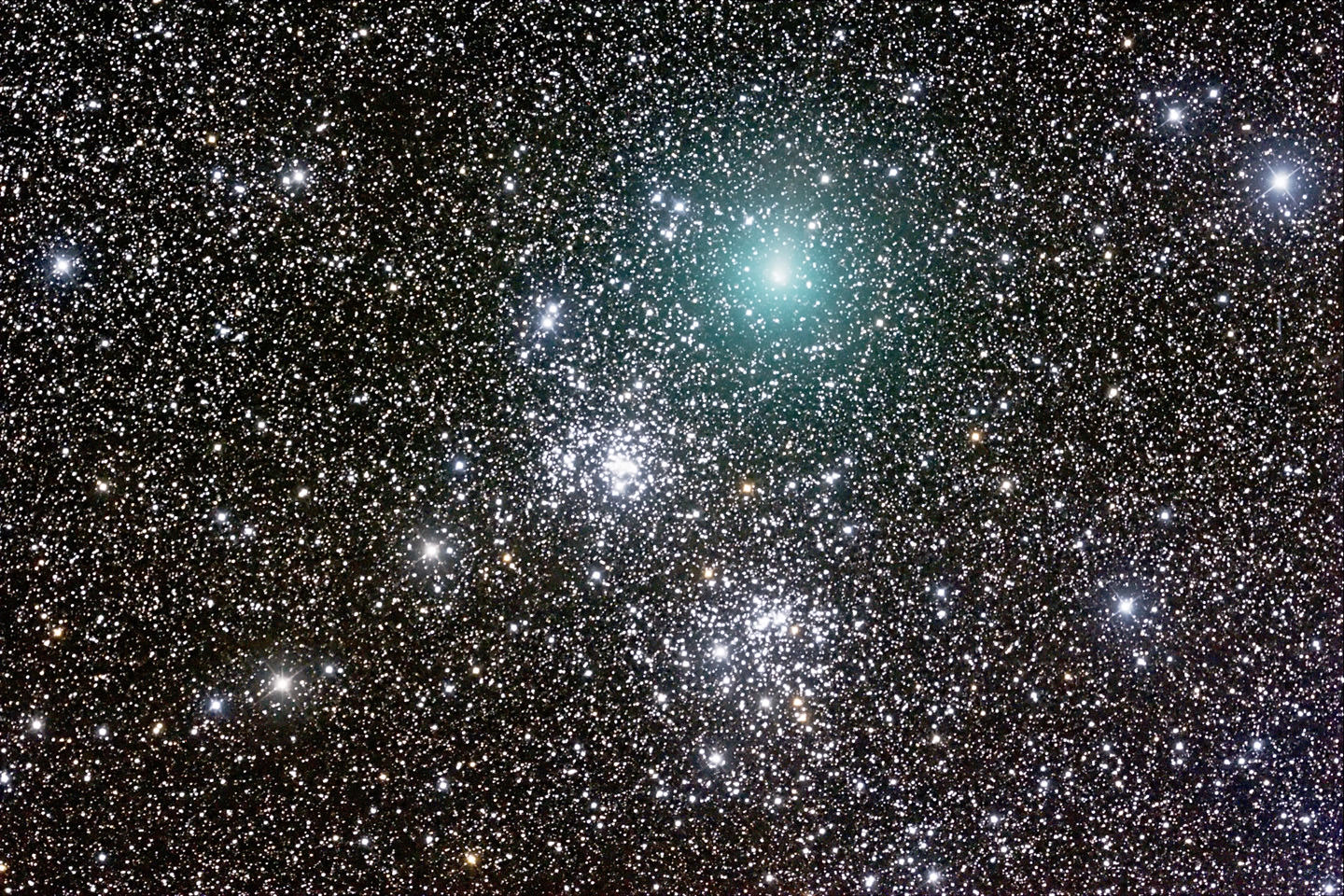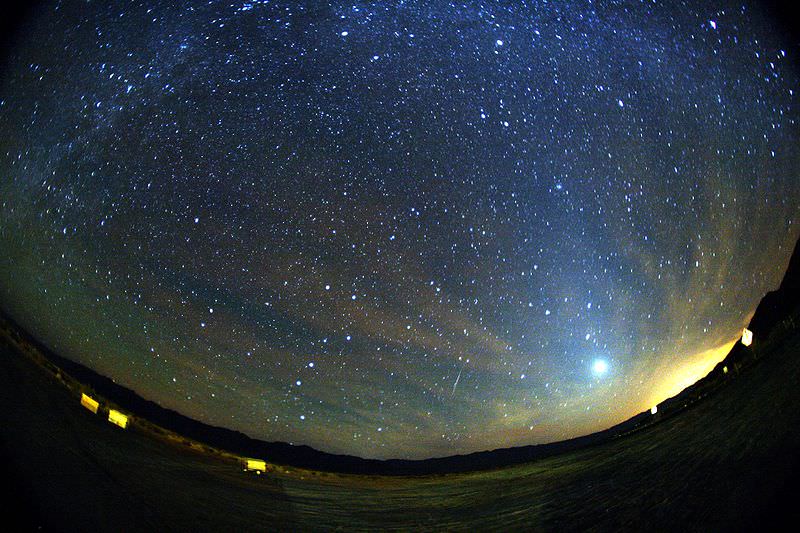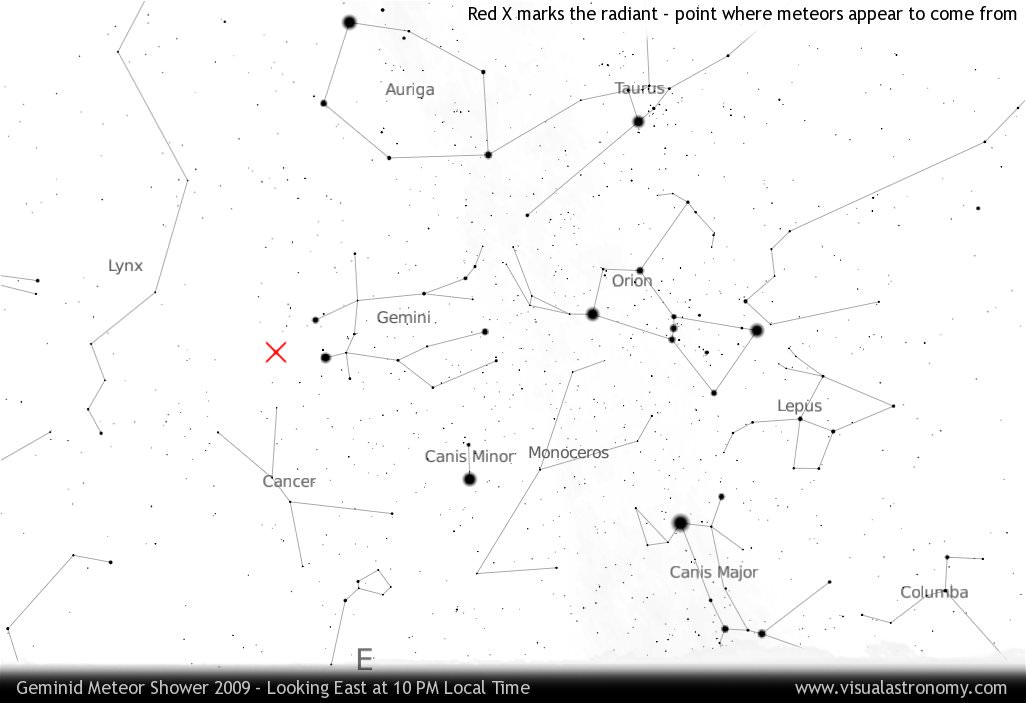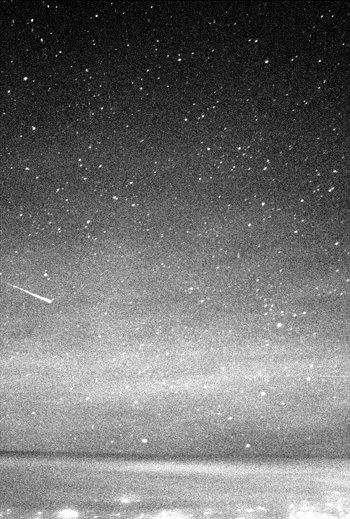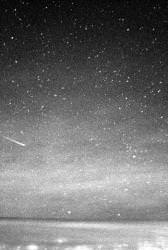[/caption]
The comet of the year for 2010 seems to be Hartley 2. Although this comet is receding from Earth now (its closest approach was in the latter half of October) and growing fainter, it seems to have left us with one last hurrah: The spawning a brief meteor shower.
Although other comets, such as 2009 R1 (McNaught) and 2P/Encke have passed earlier this year, none has presented an especially tempting target for amateur astronomers (both McNaught and Encke were too close to the Sun during perihelion to be easily observed). Additionally, Hartley is the target of a flyby of the Deep Impact probe bringing it further attention.
Meanwhile, observationally, the comet has been somewhat difficult to observe. I went out on October 17th to hunt for it with a 4″ telescope, but despite my best efforts, couldn’t find it. Although the comet was predicted to reach 5th magnitude, the growing nucleus has apparently become so diffuse, reaching over 1° in the sky, that it’s hard to spot. Undeterred, I attempted again this past weekend with my 8″ SCT. Again, my attempts were frustrated. Even a 15 second exposure with my camera barely brought out more than a smudge.
Yet that night we observed several bright meteors radiating from near Cassiopeia which is where Hartley had been a few weeks prior. We checked to ensure there weren’t any other annual meteor showers from that region. Sure enough, there weren’t, and we wondered if there might be a connection between Hartley’s passing and the meteors we witnessed.
Sure enough, just such a shower was a predicted possibility. Whether or not the shower would occur would depend on just how much dust Hartley had given off in the past and how diffuse the cloud had grown (on this pass and others) since its closest approach to Earth was still 12 million km. Although the meteors my friends and I witnessed were notable (around 2nd to 3rd magnitude) they came from the wrong direction. Meteors spawning from Hartley should have a radiant in Cygnus, the swan. But while ours may not have caught these “Hartley-ids”, others have been witnessing a far grander show in the past few nights that seem to come from the right direction.
In Seascape California, Helga Cabral caught a bright fireball. “I saw a bright white ball and tail, arcing towards the ocean. It was quite beautiful and it looked like it was headed out to sea and so picture perfect it could have been a movie!” A similar fireball was reported the same night near Boston, Massachusetts by Teresa Witham. The predicted peak of this shower occurs tonight so if you have a chance and clear skies, go out and look. As with most showers, there may be some stragglers just before and after so you may be able to catch some for the next few nights if conditions tonight aren’t favorable.
Meteors from Hartley 2 will have a relatively low velocity upon entering our atmosphere since the comet is traveling roughly in the same direction. As such, the expected velocity as it hits our planet is a mere 7 miles a second. The result of this is that they will likely travel slowly across the sky, taking perhaps as much as a few seconds. In contrast, the Leonid showers coming later this month have a relative velocity of 45 miles per second, which causes the meteors to streak across the entire sky in less than a second. The lower velocity for the Hartley-ids will also mean they won’t undergo as much frictional heating and will likely glow fainter shades of reds and yellows.

